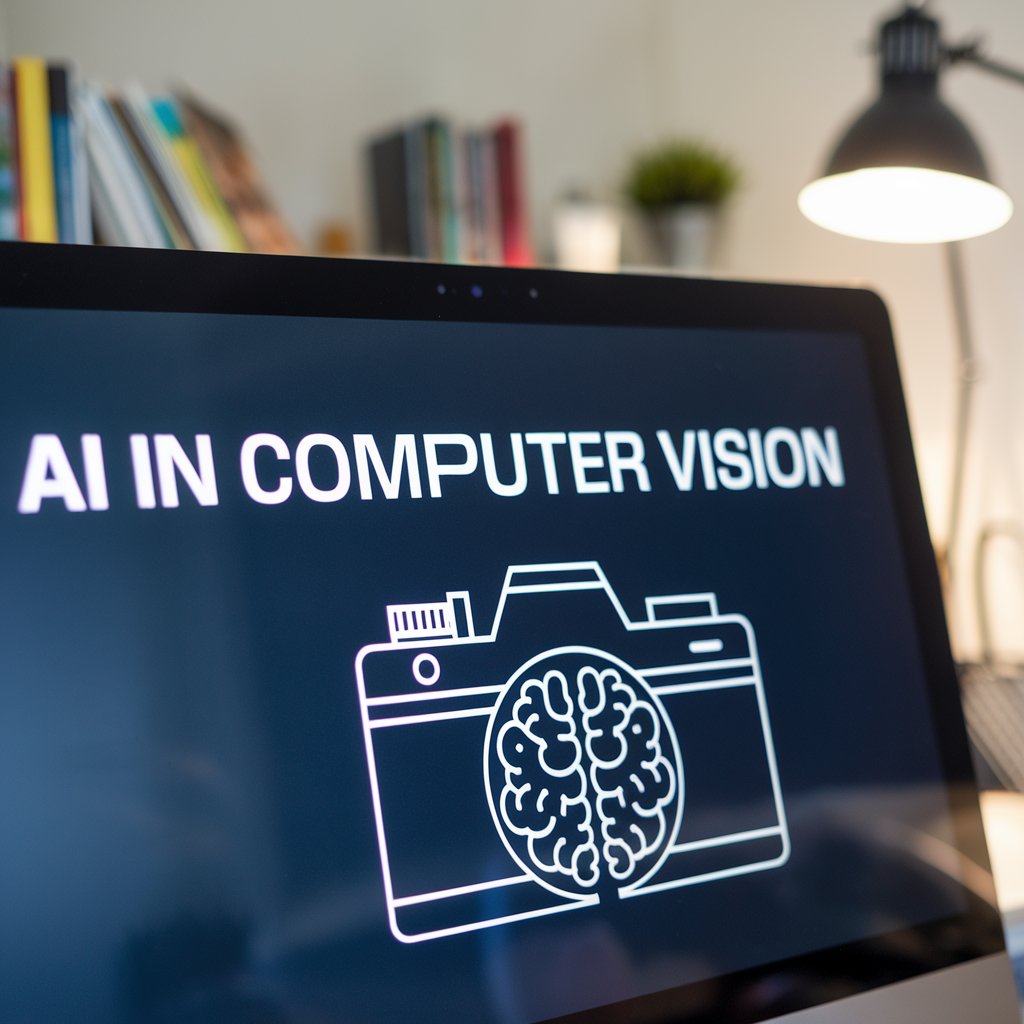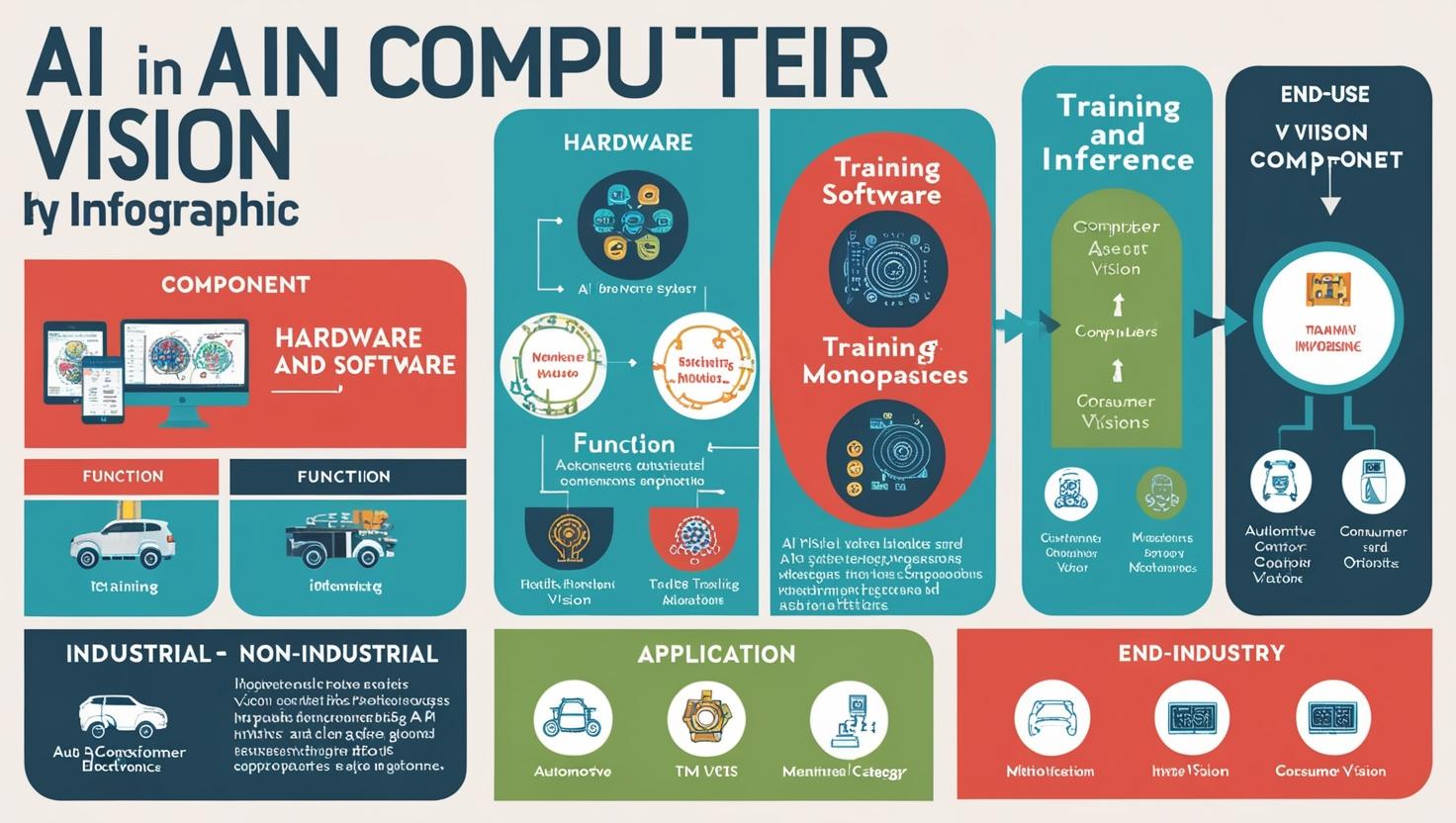The rapid evolution of Artificial Intelligence (AI) has sparked transformative changes across various sectors, and one of the most significant advancements is in computer vision. Advanced AI-powered computer vision technology is revolutionizing industries by enabling machines to “see,” analyze, and interpret visual data, mimicking the human ability to perceive and make decisions based on what they see.
At the heart of this transformation is smart image recognition, which has expanded the capabilities of computer vision far beyond traditional applications. From healthcare and retail to manufacturing and autonomous vehicles, AI computer vision is making a substantial impact, enhancing operational efficiency, accuracy, and safety across industries.
What is Advanced AI Computer Vision?
Computer vision is a field of AI that focuses on enabling machines to interpret and understand visual information, such as images and videos. With the advent of deep learning and neural networks, advanced AI computer vision goes beyond simple image recognition, providing systems that can identify, classify, and analyze objects, faces, scenes, and even complex movements in real-time.
AI-driven computer vision systems utilize convolutional neural networks (CNNs) and deep learning algorithms to learn from vast amounts of visual data, improving their accuracy over time. The key feature of advanced computer vision is the ability to not only recognize patterns but also to understand context, make predictions, and take action based on visual inputs.
The AI in video surveillance industry is projected to grow from USD 3.90 billion in 2024 to USD 12.46 billion by 2030, growing at a CAGR of 21.3% from 2025 to 2030.
Key Industries Benefiting from Advanced AI Computer Vision
- Healthcare: Revolutionizing Diagnostics and Treatment
In the healthcare industry, AI-powered computer vision is significantly improving diagnostic capabilities. By analyzing medical images like X-rays, CT scans, and MRI scans, AI algorithms can detect anomalies such as tumors, fractures, and other conditions with remarkable accuracy. Additionally, computer vision systems can automate tedious processes like identifying and categorizing tissue, thus reducing the chances of human error and enabling faster diagnoses.
Furthermore, AI-driven image recognition is enhancing surgical robotics, providing real-time insights during surgery, and supporting remote patient monitoring with continuous tracking of medical conditions through imaging.
Download PDF Brochure @
https://www.marketsandmarkets.com/pdfdownloadNew.asp?id=141658064

- Retail: Enhancing Customer Experience and Operations
Advanced AI computer vision is reshaping the retail landscape by enabling smart shopping experiences. Through image recognition, retailers can create personalized shopping experiences by identifying products on store shelves, tracking customer behavior, and offering tailored recommendations in real-time. For example, cameras powered by AI can detect a shopper’s movements and preferences, offering suggestions or promotions based on their browsing habits.
Automated checkout systems are also using computer vision to identify products without the need for barcodes or manual input, speeding up the checkout process and improving operational efficiency. Inventory management has also become smarter with computer vision systems that can automatically track stock levels and detect discrepancies in real-time.
- Manufacturing: Increasing Efficiency and Reducing Defects
In manufacturing, AI computer vision is playing a pivotal role in quality control and production optimization. AI-powered cameras can inspect products on production lines, ensuring they meet quality standards and detecting defects that might be missed by human workers. By identifying issues early, manufacturers can prevent defective products from reaching customers, reducing waste, and improving overall product quality.
Additionally, computer vision systems can automate predictive maintenance, identifying potential equipment failures before they occur and scheduling timely repairs. This capability reduces downtime and enhances the efficiency of manufacturing operations.
- Autonomous Vehicles: Enhancing Safety and Navigation
Autonomous vehicles, including self-driving cars and drones, rely heavily on AI computer vision to navigate and interpret the world around them. Advanced image recognition technologies allow vehicles to detect pedestrians, other vehicles, traffic signs, and obstacles in real time. By continuously processing visual data from cameras and sensors, AI enables autonomous vehicles to make split-second decisions, improving safety and reliability.
The future of autonomous driving will be largely dependent on AI’s ability to recognize and interpret complex environments accurately, ensuring safe and efficient travel.
- Agriculture: Transforming Farming with AI-Powered Imaging
In agriculture, AI computer vision is being used to revolutionize crop monitoring, pest detection, and yield prediction. Drones equipped with AI-powered cameras can capture high-resolution images of farmland, identifying areas with unhealthy crops or signs of pests. This data can then be used to apply targeted treatments, reducing the need for chemicals and improving crop health.
Additionally, AI-based systems are enabling farmers to assess soil health and predict crop yield, helping them optimize planting schedules and improve resource management.
Benefits of Advanced AI Computer Vision
- Improved Accuracy and Efficiency
AI-powered computer vision systems significantly reduce human error, providing higher accuracy in tasks like image analysis and object detection. These systems can process vast amounts of visual data far more quickly and efficiently than humans, leading to faster decision-making and increased productivity across industries.
- Real-Time Analysis
One of the most powerful aspects of AI computer vision is its ability to provide real-time analysis. Whether it’s identifying a defect in a manufacturing process or recognizing a customer in a retail setting, AI systems can analyze and act on visual data instantaneously, enabling faster responses and minimizing delays.
- Cost-Effective Solutions
While the initial setup of AI-driven computer vision systems may require investment, the long-term cost savings are substantial. By automating processes like quality control, inventory management, and security surveillance, businesses can reduce labor costs, increase operational efficiency, and minimize losses.
- Enhanced Safety
In industries like automotive and healthcare, AI computer vision plays a critical role in improving safety by identifying potential hazards, monitoring risky behaviors, and ensuring adherence to safety standards. In autonomous vehicles, for example, AI helps prevent accidents by recognizing objects and obstacles in real-time.
Challenges and Future Prospects
Despite its tremendous potential, the adoption of AI computer vision does come with challenges. Data privacy concerns are a significant issue, especially with applications like facial recognition and surveillance. Additionally, while AI algorithms can be highly accurate, there are still limitations when it comes to understanding complex scenarios and context.
However, as AI continues to advance, we can expect even more innovative applications for computer vision. Quantum computing and edge AI will further enhance the capabilities of computer vision systems, making them more powerful and accessible across industries.
Advanced AI computer vision is undoubtedly a game-changer for a wide range of industries, enabling businesses to operate more efficiently, safely, and intelligently. With continuous improvements in image recognition, deep learning, and real-time analysis, the potential applications of computer vision will only grow, providing even more opportunities for innovation and growth. Whether it’s in healthcare, retail, automotive, or agriculture, AI-powered computer vision is poised to shape the future of industries across the globe.
Frequently Asked Questions (FAQ) about Advanced AI Computer Vision
1. What is Advanced AI Computer Vision?
Advanced AI computer vision refers to the use of artificial intelligence (AI) algorithms and machine learning models, particularly deep learning and convolutional neural networks (CNNs), to enable machines to interpret and understand visual information from images and videos. It allows systems to recognize objects, patterns, faces, and complex scenes, improving decision-making and automating tasks across various industries.
2. How does AI-powered computer vision work?
AI-powered computer vision works by training algorithms to process large sets of visual data. Using deep learning models, such as CNNs, the system learns to detect features, classify objects, and make predictions based on visual data. Over time, the AI improves its ability to identify and interpret complex patterns, making it more accurate and efficient in real-world applications.
3. What industries benefit from AI computer vision?
Several industries benefit from AI computer vision, including:
- Healthcare (improving diagnostics through medical imaging)
- Retail (personalized shopping experiences and automated checkout)
- Manufacturing (automated quality control and predictive maintenance)
- Automotive (autonomous vehicles and real-time obstacle detection)
- Agriculture (crop monitoring and pest detection)
- Security (surveillance systems with facial and object recognition)
4. What are the main benefits of AI computer vision?
Some key benefits include:
- Increased accuracy and efficiency: Machines can analyze visual data more accurately and at faster speeds than humans.
- Real-time analysis: AI provides instant insights, which improves decision-making.
- Cost savings: Automation reduces labor costs and optimizes operations.
- Enhanced safety: AI helps identify risks and hazards in real-time, improving workplace safety.
5. What are the challenges of implementing AI computer vision?
Despite its potential, implementing AI computer vision comes with challenges such as:
- Data privacy concerns: The use of visual data, especially facial recognition, raises privacy issues.
- Data quality: AI systems need vast amounts of high-quality labeled data to train effectively.
- Complexity in understanding context: While AI has made great strides, understanding complex scenes with multiple variables remains challenging.
6. What is the future of AI computer vision?
The future of AI computer vision looks promising, with advancements in edge computing, quantum computing, and augmented reality (AR). These technologies will enhance the capabilities of computer vision systems, allowing for more sophisticated real-time applications. The growth of AI in sectors like healthcare, transportation, and smart cities will continue to drive innovation and new use cases.

